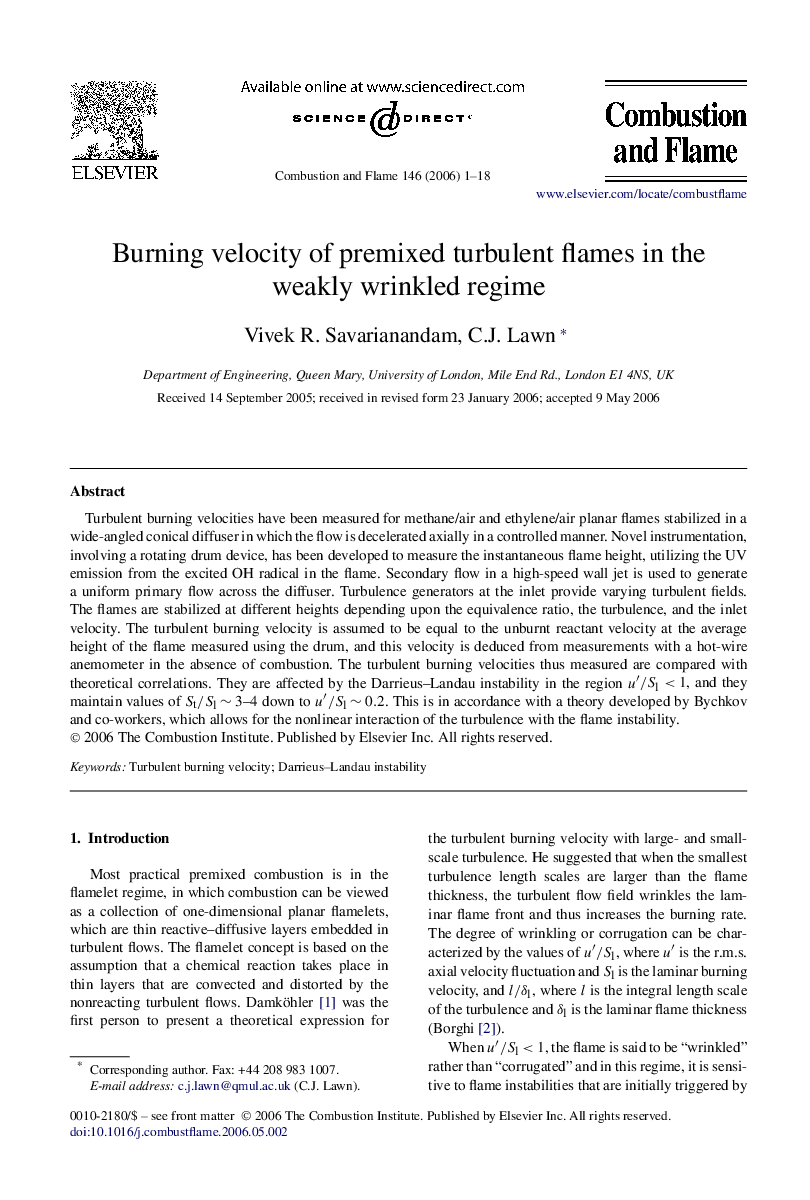| Article ID | Journal | Published Year | Pages | File Type |
|---|---|---|---|---|
| 169900 | Combustion and Flame | 2006 | 18 Pages |
Turbulent burning velocities have been measured for methane/air and ethylene/air planar flames stabilized in a wide-angled conical diffuser in which the flow is decelerated axially in a controlled manner. Novel instrumentation, involving a rotating drum device, has been developed to measure the instantaneous flame height, utilizing the UV emission from the excited OH radical in the flame. Secondary flow in a high-speed wall jet is used to generate a uniform primary flow across the diffuser. Turbulence generators at the inlet provide varying turbulent fields. The flames are stabilized at different heights depending upon the equivalence ratio, the turbulence, and the inlet velocity. The turbulent burning velocity is assumed to be equal to the unburnt reactant velocity at the average height of the flame measured using the drum, and this velocity is deduced from measurements with a hot-wire anemometer in the absence of combustion. The turbulent burning velocities thus measured are compared with theoretical correlations. They are affected by the Darrieus–Landau instability in the region u′/Sl<1u′/Sl<1, and they maintain values of St/Sl∼3–4St/Sl∼3–4 down to u′/Sl∼0.2u′/Sl∼0.2. This is in accordance with a theory developed by Bychkov and co-workers, which allows for the nonlinear interaction of the turbulence with the flame instability.
